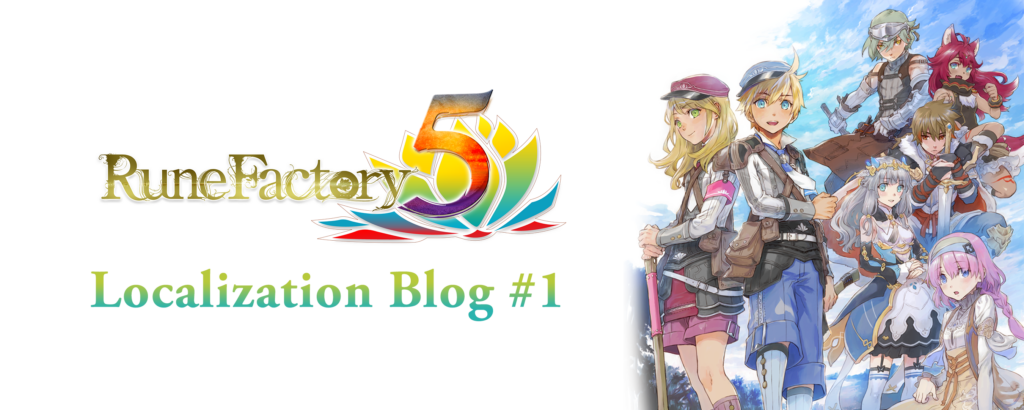Rune Factory 5 Localization Blog #1
Hello and welcome to our first localization blog for Rune Factory 5! We’re delighted to talk about the newest entry in the Rune Factory series with you. Everyone working on this title can’t wait for you to experience the game yourself next year!
Rune Factory 5 features a cast of more than two dozen characters who speak over a million Japanese characters worth of text…and if you include system text such as item descriptions, that brings the total count to 1.5 million characters! As you can imagine, a game of this size comes with many localization challenges. For this blog entry, we’d like to give you a quick look at Rune Factory 5’s English version, as well as discuss some of the challenges we’ve encountered during the game’s localization process.
The Story So Far
Rune Factory 5 opens with the protagonist waking up in an unfamiliar forest, having forgotten everything but their own name. After saving a girl from a monster attack, they arrive at a small town called Rigbarth. The friendly residents offer to let the protagonist stay there until they regain their memories. To repay their kindness, the protagonist joins the Rigbarth branch of a peacekeeping organization known as SEED. As SEED’s newest ranger, they strive to protect Rigbarth from threats both large and small, and eventually become embroiled in a conflict that could change the fate of the world itself…
One Lucas Limit
Two of Rune Factory 5’s bachelors have names that, while easily distinguishable in Japanese, can sound surprisingly similar in English. The characters in question are Lucas (ルーカス, Luukasu) and Ryker (リュカ, Ryuka).
The mysterious gentleman known as Lucas has, like the protagonist, somehow lost his memories. Consequently, absolutely everything fascinates him, and even the most mundane events seem noteworthy — quite literally, since he records his experiences in a notebook that he carries with him everywhere.
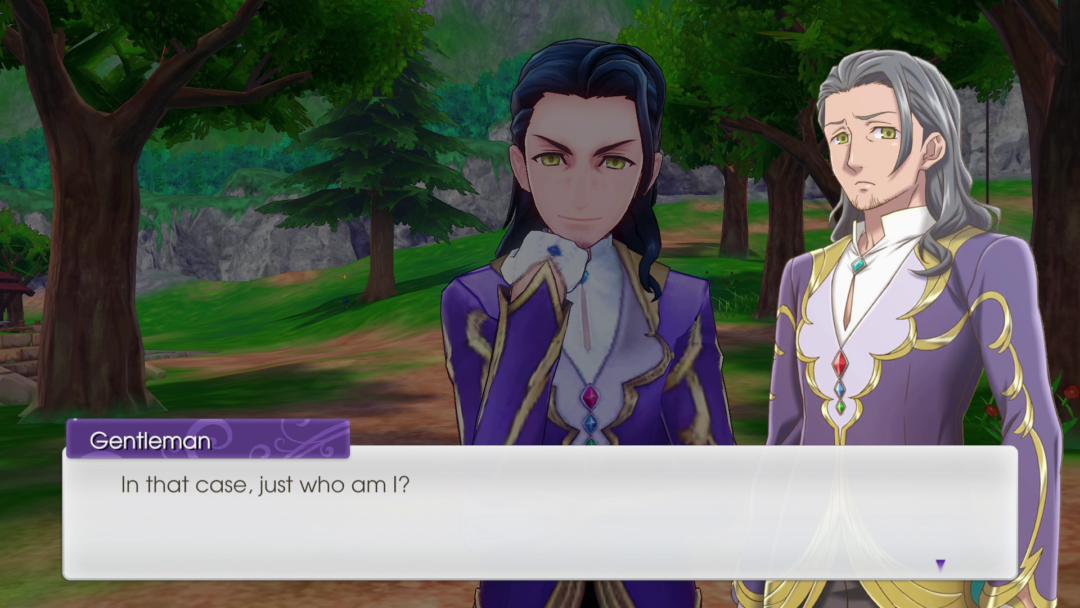
Does anyone here NOT have amnesia?
Ryker is the apprentice of Rigbarth’s world-famous architect, Palmo Creacie de Sainte-Coquille. Although confident that he’ll eventually match his master in both skill and reputation, during the day he’s much more likely to be found napping instead of working. If you encounter him at night, however, he’s wide-awake and ready to get down to business, whatever that may be.
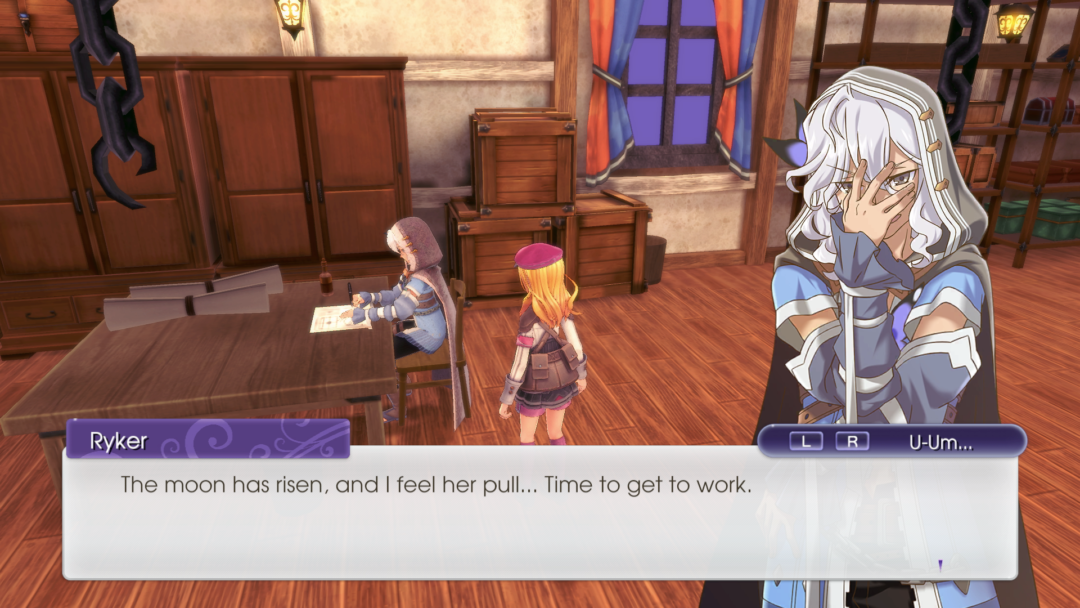
Ryker has a flair for the dramatic.
Ryuka can be rendered several different ways in English, including Laika, Luca, and — you guessed it — Lucas. (Fun fact: the Japanese name of Lucas from the EarthBound series is Ryuka.) Since Ryuka has more possible translations than Luukasu, we chose to localize it with an R to distinguish him from Lucas, hence the name “Ryker.”
No, The Other Doug
A similar localization problem arose with the names for Rigbarth’s blacksmith and a returning character from Rune Factory 4. Those of you who’ve played Rune Factory 4 will remember a certain dwarven bachelor by the name of Doug (ダグ, Dagu). If players have Rune Factory 4 Special save data on their Switch, Doug will come visit Rigbarth.
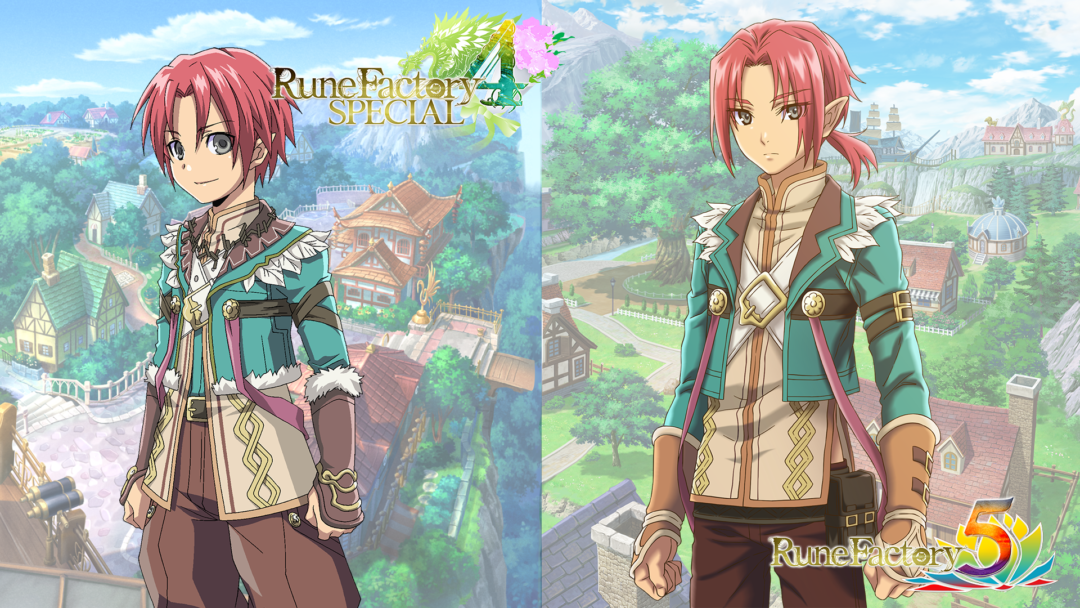
Rune Factory 5 takes place some decades after Rune Factory 4.
However, Rigbarth already has a dwarven resident by the name of Dogu (ドグ), which can also be translated as “Doug.” (Perhaps it’s just a popular name among dwarves in this world?)
As dwarves, they also speak in a similar fashion. Specifically, the last character in every single one of their Japanese lines appears in katakana as opposed to hiragana or kanji. This meant we had to double- and triple-check their lines to make sure we’d put the right words into the mouth of the right dwarf.
Obviously, it made sense to localize the new Doug to prevent players from mixing up the two characters. We eventually settled on the name “Darroch” for Rigbarth’s master blacksmith.
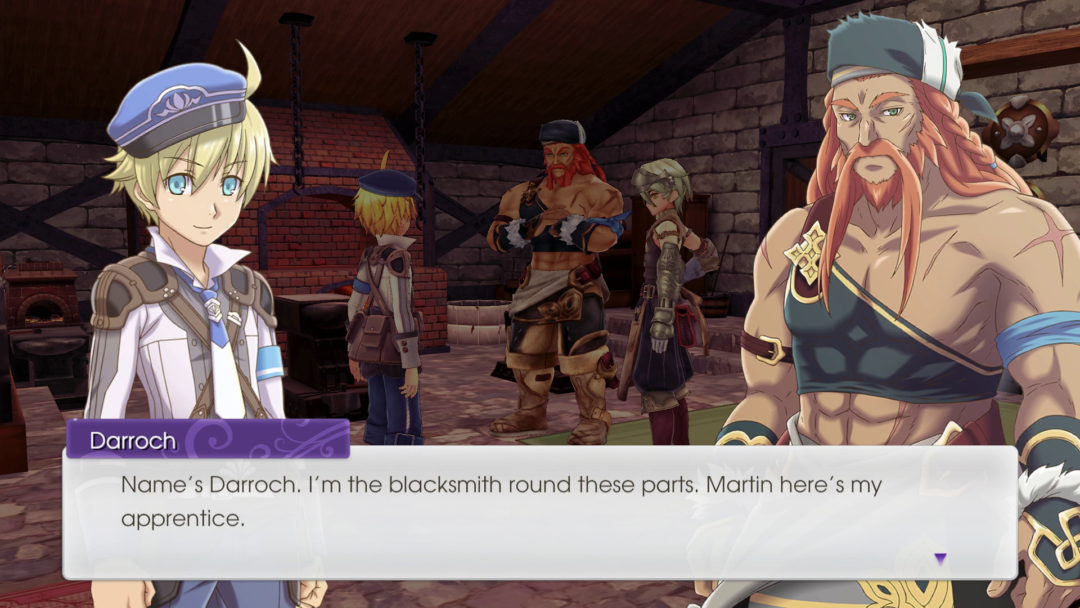
Darroch? What a coincidence, that’s my name!
Other Naming Considerations
Another character who underwent a significant name change is the Warden, who founded SEED itself. His original name is Gandage (Gandoaaju, ガンドアージュ). We were quite reluctant to change his name, but a majority of the other character names have clear 1:1 localizations that sound familiar to an English-speaking audience. We also worried about whether we could localize it in a way that would make the pronunciation clear at a glance. During our character naming meeting, we chose to localize his name as “Gideon” for clarity’s sake.
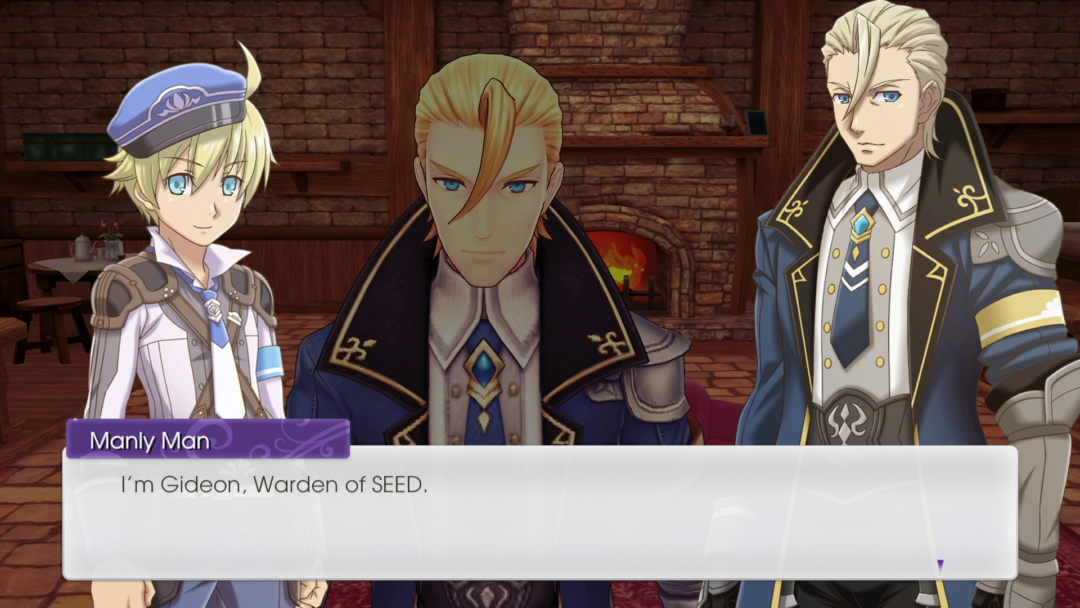
Yes, we know he’s handsome. No, you can’t marry him.
One name we considered changing but left alone is Fuuka, which belongs to a were-animal marriage candidate who works at Rigbarth’s restaurant. Depending on how you spell her name in English, you could end up with some unfortunate mispronunciations. (For an example of how this kind of name can go very wrong, see this article about a character mascot named “Fukuppi/フクッピー”) We brainstormed some alternatives, such as “Fauna,” but ultimately decided to add an extra “u” to her name to make the pronunciation clear.

You can visit the restaurant to give Fuuka a friendly hello!
Context is King
So what happens after we’ve translated, edited, and proofed all 1.5 million Japanese characters of text? Well, the game enters a stage known as LQA (Localization Quality Assurance) where we check everything in context. This is a crucial part of the localization process for several reasons:
- What seems like a perfectly good line in isolation may end up marching off the screen or getting squashed down to an unreadable size to fit its text box. (You may recall that we encountered similar problems while localizing Rune Factory 4 and Sakuna: Of Rice and Ruin.) For example, when the game displays your current location and destination, we must consider how the longest possible place name will appear and adjust the text accordingly.
- A character’s facial expression and/or voice actor’s delivery can completely change the tone of a line that you’ve only read in your head. Checking it in context helps prevent tonal dissonance.
- Location, time of day, and other factors also make a difference. It may make sense to translate a character’s line as “It looks cold outside today,” until you realize they can say that while they’re outside at night.
- Since the lines appear one after another in the script, it’s not always clear where one conversation ends and another begins unless the notes explicitly say so. Like with Rune Factory 4, talking to the characters in-game is the best way to figure out which line belongs to what conversation.
- In the case of new monsters, seeing them in the flesh makes it easier to localize their names. Take the raijingu goburin (ライジングゴブリン), which literally translates to “Rising Goblin”. Without any context, we had no idea what this name meant until we realized that raijin refers to the Japanese god of thunder. This particular goblin appears in a lightning-filled area and drops a lightning-related item.
- And of course, LQA also gives us an opportunity to look for any errors that may have slipped through spellcheck (such “to me” appearing as “tome”) or proofing. When someone discovers such a mistake, they
add it to the Wall of Shameinform an editor so that they can fix it right away.
So as you can see, we’ve still got out work cut out for us!
We hope that this blog post gave you a little insight into some of factors we’ve taken into account during Rune Factory 5’s localization process. In the coming months, we’ll cover some other interesting localization topics, so you can look forward to more blog posts as we count down the days and weeks to the game’s English release!

